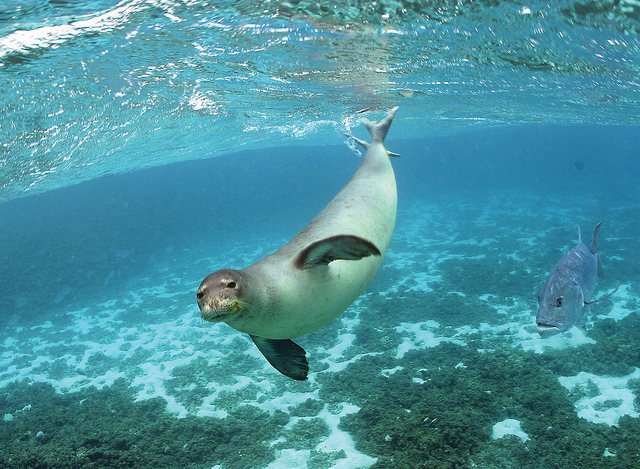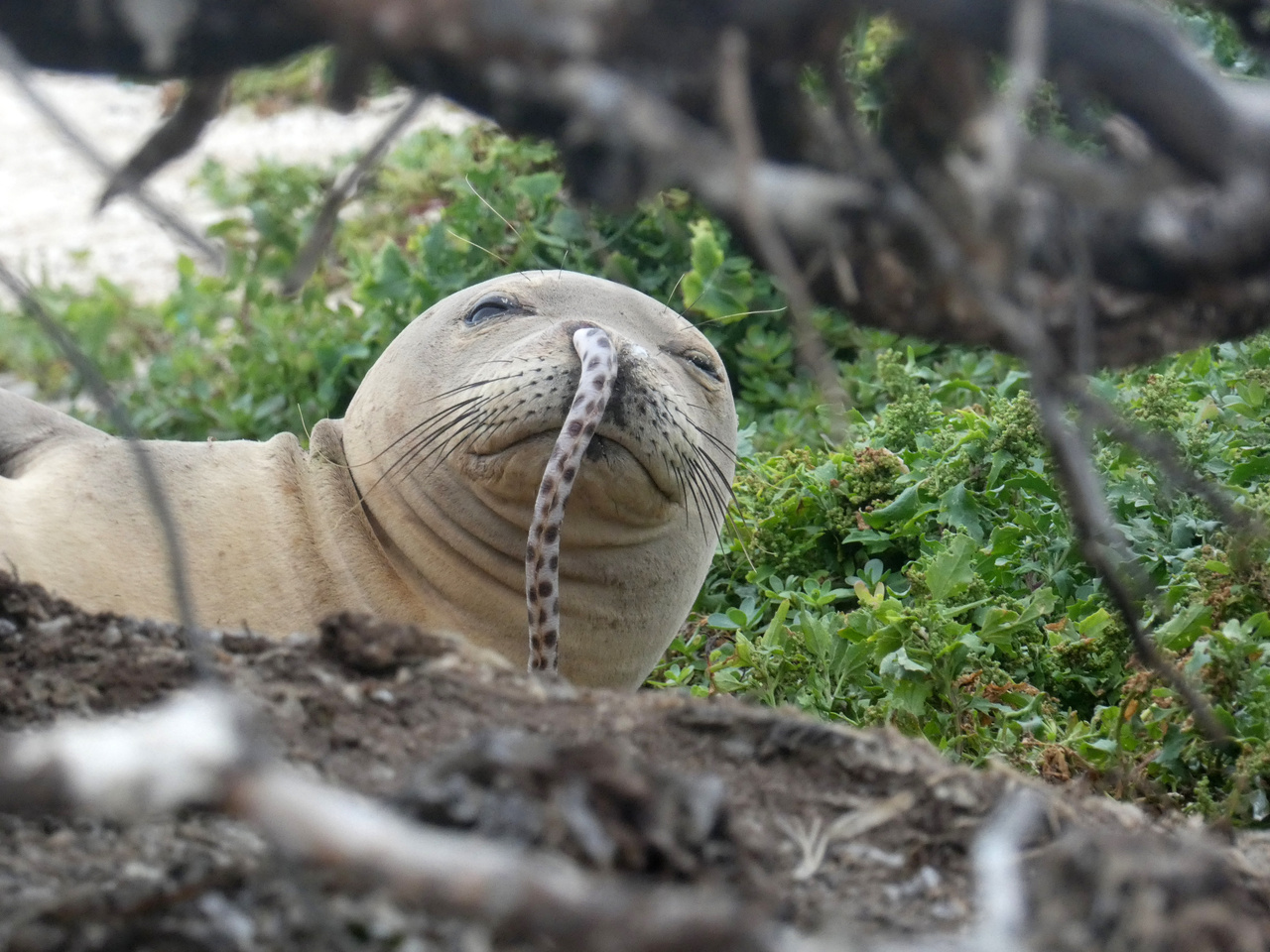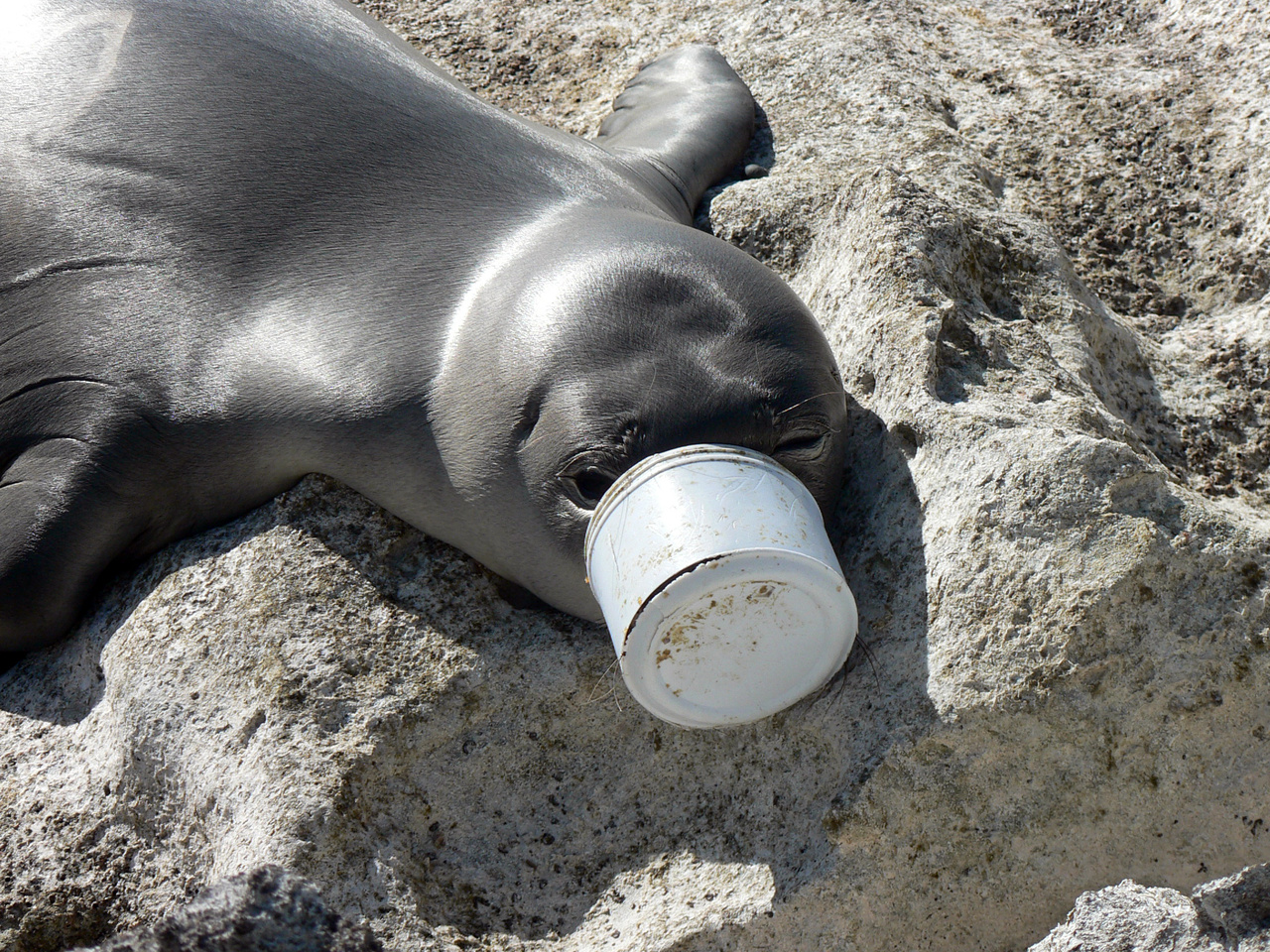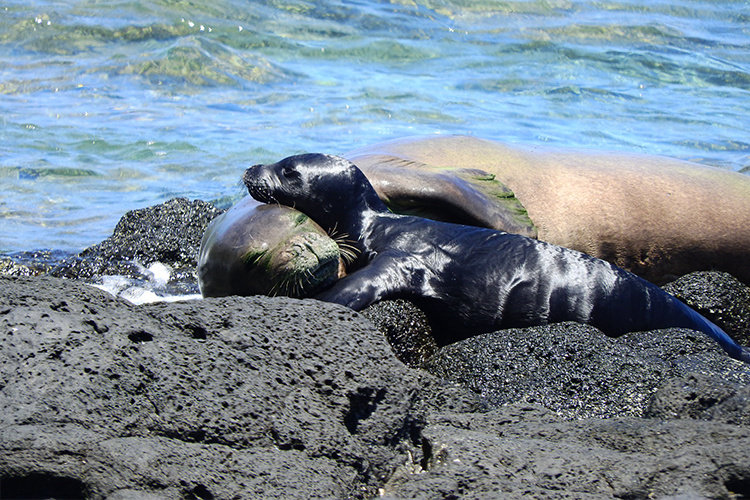French Frigate Shoals, Hawaii —(Map)
When a research group posted a picture of a young monk seal on the Internet, the picture, and the seal, soon became big news. Why? The seal had an eel hanging out of its nose.
Hawaiian monk seals live in Hawaii and feed on the fish, octopus, and eels they find there. Monk seals do not have ears, unlike most seals. The snout of the seals has two large nostrils (nose holes) that close by themselves when the seals go underwater.

(Source: U.S. Fish and Wildlife Service Headquarters, via Wikimedia Commons.)
Researchers in the Hawaiian Monk Seal Research Program study and protect Hawaiian monk seals. Over time, the seals have been hunted down. Now there are only about 1,400 left. Keeping them safe is one of the jobs of the program.
Over the summer, researchers spotted a young monk seal with a spotted eel hanging out of its nose. They removed the eel, which was dead. The seal is now healthy and has had no lasting problems.

(Source: Brittany Dolan, NOAA Fisheries.)
If the eel had not been taken out, it could have become a problem. With the eel in its nostril, the seal could not have closed its nose while diving. So it could have gotten water in its lungs, which would have made it very ill.
This is not the first time workers have had to remove an eel from a seal’s nose. The first time was about two years ago. That case was even worse because only 2 inches (5 centimeters) of the eel was hanging out. The rest of the 2.5 foot (75 centimeter) eel was inside the seal. But researchers were able to remove the eel.

(Source: NOAA Fisheries.)
Since that time, the same thing has happened a few more times. Charles Littnan, the program’s main scientist, says it’s possible the problem happens when young seals are hunting. The eels may be trying to hide, and the pups, who are trying to catch them “…are shoving their faces into holes,” says Dr. Littnan. But he’s not sure about this idea, since the muscles that close the seal’s nostrils are quite strong. It seems unlikely an eel could push through.
Perhaps the bigger mystery is why this seems to be happening now. The scientists have been watching the seals for about 40 years, but they didn’t notice any eel-in-nose problems until just a few years ago.

(Source: NOAA Fisheries.)
Monk seals face many threats much worse than eels. Diseases, shark attacks, and trouble finding food, are real problems for the seals. So is climate change.
Human trash is also causing problems. The curious animals often check out unusual items they find in the sea. This can cause them to get trapped in things like rope or fishing line. Plastic trash in the ocean and on beaches also causes problems.

(Source: NOAA Fisheries.)
Visitors sometimes get too close and disturb mothers and their pups. Earlier this year, one tourist had to pay $1,500 after he tried to touch a seal.
There is good news, though. Thirty Hawaiian monk seals were born in 2018. That’s a record. The old record was 21 seals back in 2013.
😕
This map has not been loaded because of your cookie choices. To view the content, you can accept 'Non-necessary' cookies.
